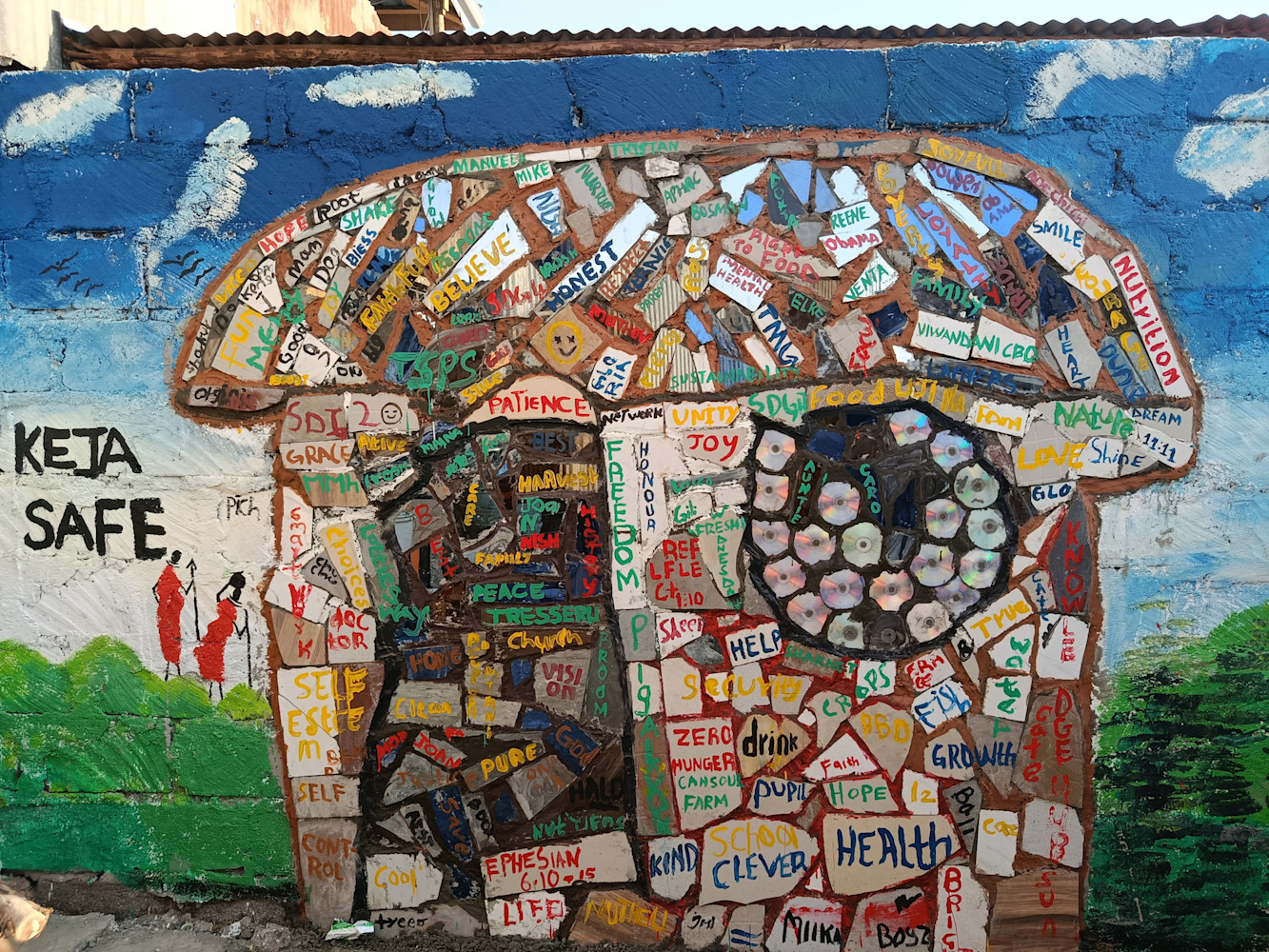Unveiling the hidden costs of climate-related disasters in eastern Africa
Lessons in integrating True Cost Accounting to support disaster risk management
by Elena Lazutkaite | 2023-04-27

The eastern Africa region is grappling with the devastating impacts of climate-sensitive disasters, with floods, droughts, and crop pest invasions that wreak havoc on livelihoods, agriculture, and the entire economy. The region's vulnerability is heightened by its reliance on rain-fed agriculture and livestock keeping as a key source of income. Early Warning-Early Action Systems (EWS) can help mitigate the impacts, but assessing the true cost of climate-related disasters is challenging due to a lack of reliable data in affected countries.
TMG Research gGmbH has been at the forefront of advancing the concept of True Cost Accounting (TCA) as a transformative tool to capture the full environmental, social, and human costs in food systems, including in the private sector. Building on this momentum, TMG now showcases the enormous value of TCA in the critical area of disaster risk management. By integrating TCA in disaster risk management, a comprehensive picture of the impact of climate-related disasters can be drawn, enabling informed and timely decision-making.
A Case in Point: The Desert Locust Upsurge in the Horn of Africa
The true costs of climate-sensitive disasters - including the costs of inaction or (mis)management costs - are often hidden, with far-reaching environmental and social impacts left unaccounted for. In our study published in the peer-reviewed journal Agronomy, we delved into the 2019-2021 desert locust upsurge in the Horn of Africa that threatened the region’s already fragile food security. What we found was shocking. While the control campaign was well-intentioned, destructive environmental impacts of the methods used were left unacknowledged. The large-scale spraying of organophosphate insecticides designed to kill the locusts, suppressed the upsurge but also led to “collateral damage” on non-target animals, including honeybees. By 2021, after millions of litres of neurotoxic insecticides were sprayed, the honey production in Ethiopia decreased by a staggering 78%. If we consider the impact on wild pollinators, birds, and other animals, the “true costs” of control operations could be in the realm of billions of US dollars. Our findings call for a move away from reactive resort to highly toxic chemical insecticides and towards early action using biopesticides supported by intelligent EWS.
Our study shines a light on what a TCA analysis of crop pest invasions would entail and how game-changing it could be in promoting a shift towards more sustainable DRM practices. A fully executed TCA analysis of a pest outbreak, such as the transboundary desert locust upsurge, would not only include financial costs of lost crop yield and pest control measures but also the potential harm to human health and the environment resulting from the use of toxic pesticides. Externalities would include factors such as soil health and biodiversity. The analysis would contrast the true cost (and benefits) of status quo methods with alternative strategies that protect the health of communities and ecosystems and prevent an upsurge from transpiring. TCA could underpin the development of a new control regime for such outbreaks and trigger innovation by assessing the true costs of the existing methods and providing information on the comparative advantages of a new system.
Assessing the Impacts of Climate-Related Disasters
Climate change is causing significant disruptions in East Africa, making the need for comprehensive analysis methods such as TCA more pressing than ever. The devastating floods in South Sudan in 2021 and 2022 further highlight this urgency. These floods resulted in immediate loss of life, destruction, and displacement. Far-reaching indirect effects such as increased risk of gender-based violence, and related disruption of education, as well as health costs associated with the spread of waterborne diseases were among the social costs. These were particularly pronounced in vulnerable groups such as women and girls. A TCA approach not only helps to raise awareness among donors and other stakeholders, but also makes the case for prompt investment in preventative measures. In doing so, the indirect costs incurred by disasters can be weighed against the costs and benefits of climate resilience and adaptation strategies.
To compound matters, the Horn is entering its sixth consecutive failed rainy season, expected to aggravate the drought crisis. Identifying the true costs and benefits of different agricultural practices, such as irrigation, rain-fed or regenerative agriculture, could guide policymakers towards sustainable disaster risk management. Furthermore, the emphasis on the costs of inaction would serve as a catalyst for investment in EWS. It is noteworthy, for example, that the Global Commission on Adaptation’s flagship report found that EWS provide a tenfold+ return on investment.
How integration of TCA into early warning-early action systems helps ensure a resilient future
The latest IPCC Synthesis Report has issued a stark warning that climate-sensitive disasters are set to become more frequent and severe in the near future. To build resilience, it is imperative to understand the true costs of these events, including their intricate environmental and social impacts. However, a formidable challenge remains in the lack of reliable data to measure the externalities and help with impact assessment. We need to ask the right questions to uncover the hidden costs and fully account for the impact of climate-sensitive disasters.
TMG advocates for comprehensive data collection and analysis, as well as innovative methodologies to estimate the true costs, assess risk dimensions, and plan early action efforts for future hazardous events. To intelligently steer EWS, pioneering methodologies must also shape the design of alternative preventative methods (such as we have showcased with early action for desert locusts). This will necessitate significant investment in data-driven solutions. The stakes are high, as is the impact on livelihoods in the region. But with the right tools and investments, the region can look forward to a more resilient and sustainable future. TCA is poised to play a critical role in this effort, laying the foundation for effective governance in managing these challenges.
 Land GovernanceDec 18, 2025
Land GovernanceDec 18, 2025Land tenure, women’s land rights, and resilience: Reflections from CRIC23 toward UNCCD COP17
Our experts discuss what the exchanges at CRIC23 highlighted and revealed about the role of secure and gender-equitable land tenure in the UNCCD's work ahead of the 2026 triple COP year.
Frederike Klümper, Washe Kazungu
 Urban Food FuturesDec 09, 2025
Urban Food FuturesDec 09, 2025The story of Mukuru's Urban Nutrition Hub
In Mukuru informal settlement, a safe haven for women has grown into the Urban Nutrition Hub, a multi-purpose space for nutrition education, training, and community development, demonstrating the potential of grassroots community-owned innovation..
Serah Kiragu-Wissler
 Urban Food FuturesSep 29, 2025
Urban Food FuturesSep 29, 2025Cheaper food, higher costs: The paradox of Nairobi’s food systems
What are the hidden costs of foods sold in Nairobi's informal markets, and who must bear them? We discuss how the city could build food systems that are both affordable and fair—for consumers and the people who feed them.
Christian Sonntag, Emmanuel Atamba, Lumi Youm

